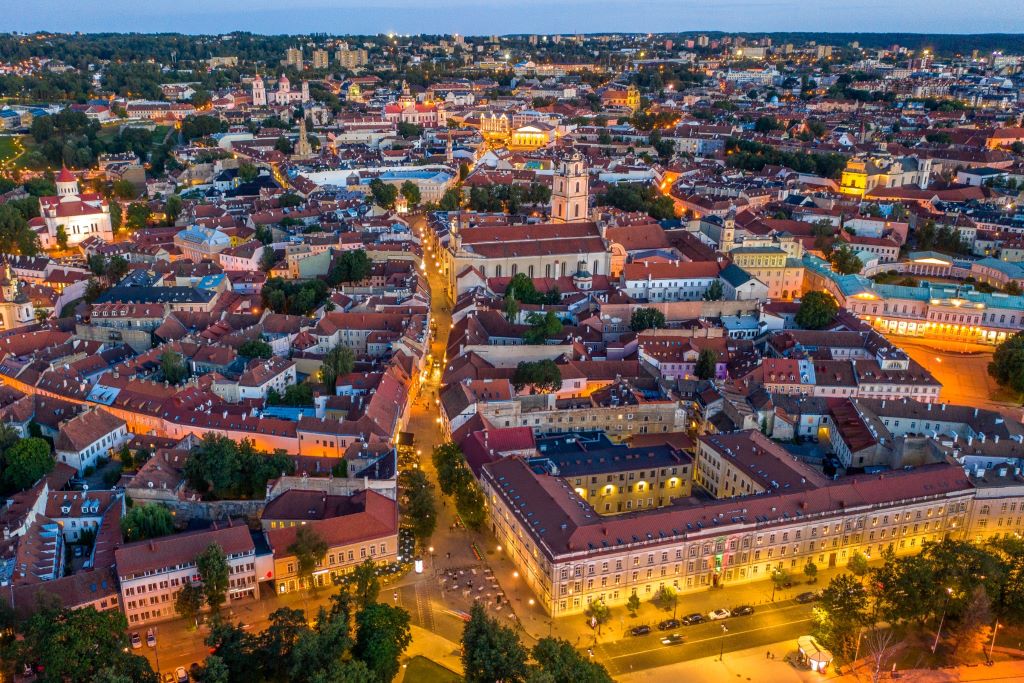„We need to bring politics to where the youth is”, Louise Thomsen, a member of the Copenhagen city council, had argued prior to the talk, now adding that we can’t expect the youth to seek information about politics in traditional ways. This notion would become a recurring theme throughout the debate. Of course, the difficult part lies in the how. All three panel guests would go on to share different ideas, as well as existing initiatives in their home countries, which they believe can raise awareness and interest in politics amongst young people.
Bringing politics to school
Perhaps the most obvious how is to bring politics to the place young people spend most of their time: schools. Concretely, Louise shares how politicians and youth politicians will be invited to partake in debates at Danish schools, something she believes to be especially relevant during elections and which has the potential to get youth to understand the importance of their vote. Emilia Uljas, an EU youth delegate in Finland and political commentator, agrees with Louise and notes that bringing politicians to schools could help shed light on party politics being something with the potential to make a difference, and combat a common belief amongst youth that politicians “spend most of their time yelling at each other”. Another way to raise awareness of the workings of politics is to simulate elections at schools. Louise shares how school elections in Danish public school help students get the feeling of what voting and participating is like. Jovydas Juocevičius, a political adviser and a member of the council of the Prienai municipality, argues that “it does not have to be focused on political parties or ideologies”, but that the school curriculum should include classes on the political system, and that a strong emphasis on how politics can affect the students’ lives would increase their civic responsibility. Towards the end of the debate, a person from the crowd raises an important concern: “how do we ensure that political education is high quality and, most importantly, unbiased?”. Louise and Emilia argue that political parties representing the whole spectrum of opinions must partake in the debate, ensuring an unbiased discussion. As for the inclusion of politics in school curriculum, Jovydas and Louise both believe that much of it, such as the technical side of politics, is possible to be taught in unbiased ways and that we need to trust in teacher’s capabilities to do so. With regards to what is taught, as opposed to how it is taught, Jovydas mentions how working groups consisting of parliamentary members from all political parties could partake in the design of the curriculum which would help ensure representativity.

Illustration by Katrín Sigrúnardóttir, Intern at the Nordic Council of Ministers in Lithuania
Politicians on social media
The rise of social media has provided an entirely new avenue of communication for politicians. An avenue that is especially relevant when discussing youth and politics, as younger people tend to be much more active on social media than they are on traditional media. But does this mean that all politicians should be using this new opportunity, and if so, how? Louise argues that “young people are on social media and therefore it’s important politicians are as well”. Both her and Emilia share stories of Danish and Finnish politicians who succeeded in reaching out to a younger audience on platforms such as TikTok. Louise claims that the Danish politicians who were successful were the ones using the platforms not only to be comical but also focused on more serious matters. According to her, politicians needed to be able to convey strong political viewpoints to engage their audience. A bit more skeptical, Jovydas shares a story of a Lithuanian politician’s campaign on social media that he thought to be rather “cringe”. He believes that not all politicians should be using social media to reach voters, and that they need to be conscious of what they’re good at and of their audience.
Young politicians
A recent Danish study, referenced by Louise, finds that roughly 50% of youth is motivated by voting for young people. Not only are young politicians more representative of the youth in terms of beliefs and opinions about society, but they may also be easier to identify with. In other words, an increase in young people holding political positions could be an important tool in increasing young voter turnout. What’s working, then, and what barriers are young aspiring politicians facing? Emilia highlights that “one very concrete problem they [aspiring youth politicians] face is money, they don’t have enough funds”, making it hard to compete with tenured and resourceful politicians when campaigning for office. Louise, agreeing with Emilia, adds that it’s vital for youth to join political parties or youth political parties, and that political parties must prioritize having young people as key candidates in elections. Not only can political parties provide funding for young candidates, but also give advice and provide help when running campaigns, something Jovydas recalls as being difficult when he ran for local office.
So, are youth and politics a match? From this discussion at Būtent Festival, it appears so but only if young people’s perspectives are taken seriously and the younger generation is represented in politics and decision making. Many steps still need to be taken for this to be achieved. From new curriculums in schools to growing opportunities for young people in government, the road to change will be tricky. However, as Louise, Emilia and Jovydas point out – these transformations are already underway in the Baltic and Nordic countries.







